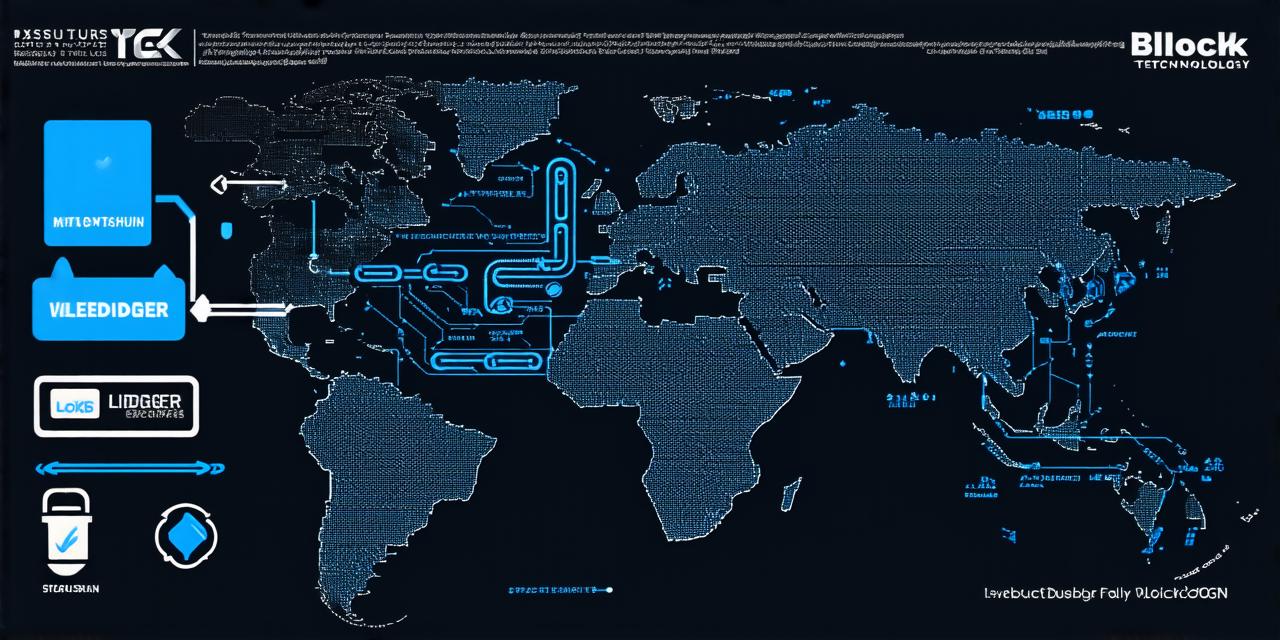Introduction
Blockchain technology is a decentralized and distributed ledger that enables secure and transparent transactions without the need for intermediaries. It is a revolutionary concept that has gained widespread attention in recent years, with numerous industries adopting it for various applications. In this article, we will explore the fundamentals of blockchain technology and its potential impact on different sectors.
What is Blockchain Technology?
At its core, a blockchain is a digital record of transactions that are stored in a distributed network of computers. Each transaction is represented as a "block" in the chain, which contains various pieces of information such as the date and time of the transaction, the parties involved, and the amount exchanged. Once a block is added to the chain, it cannot be altered or deleted, providing an immutable record of all transactions that have occurred on the network.
The decentralized nature of the blockchain means that there is no central authority controlling the network or the data stored within it. Instead, the data is managed by a consensus mechanism, which ensures that all nodes in the network agree on the validity of each transaction and the state of the ledger.
Blockchain vs Traditional Databases
Traditional databases are centralized systems that store and manage data in a single location or server. This centralization introduces several problems such as security risks, scalability limitations, and a single point of failure. In contrast, blockchain technology is decentralized and distributed, which eliminates these issues and provides numerous benefits.
Security
In traditional databases, data is stored in a single location, making it vulnerable to hacking or other forms of cyberattacks. In contrast, a blockchain’s distributed ledger means that there is no single point of failure, making it much harder for attackers to compromise the network. Additionally, the consensus mechanism ensures that any fraudulent transactions are quickly identified and rejected by the network.
Transparency
Traditional databases are typically managed by a central authority, which can limit access to data or manipulate the records stored within them. In contrast, blockchain technology is transparent, meaning that all participants on the network have access to the same information, making it much harder for any one entity to control or manipulate the data.
Scalability
Traditional databases are limited by their ability to scale horizontally, meaning that they can only handle a certain amount of traffic or data before performance degrades significantly. In contrast, blockchain technology is designed to be highly scalable, allowing it to handle large amounts of data and transactions without any decrease in performance.
Decentralization
Traditional databases are centralized systems that rely on intermediaries such as banks or other financial institutions to process transactions. In contrast, blockchain technology eliminates the need for intermediaries, enabling participants to transact directly with each other without any middlemen.
How Does a Blockchain Work?
The basic mechanism of a blockchain involves a series of nodes that communicate with each other to validate and add new transactions to the chain. When a new transaction is proposed, it is broadcast to all participants on the network, who then verify its validity by checking the transaction’s data against the rules of the consensus mechanism.
Once a transaction is verified, it is added to the blockchain as a new "block," which contains the details of the transaction and a cryptographic hash of the previous block in the chain. This cryptographic hash creates a secure link between the blocks in the chain, ensuring that any changes made to a block will be detected by the network and rejected.
Mining
In order to validate new transactions and add them to the blockchain, participants on the network must solve complex mathematical problems using powerful computers. This process is known as mining, and it requires significant computational resources. In exchange for their efforts, miners are rewarded with a portion of the transaction fees associated with the validated transactions.
Consensus Mechanisms
There are several consensus mechanisms that can be used to validate transactions on a blockchain network. The most common ones include Proof-of-Work (PoW), Proof-of-Stake (PoS), and Delegated Proof-of-Stake (DPoS). Each of these mechanisms has its own advantages and disadvantages, and the choice of consensus mechanism depends on the specific needs of the network.
Smart Contracts
Smart contracts are self-executing programs that run on the blockchain and enable the automation of various tasks such as the transfer of assets or the execution of complex business logic. Smart contracts can be written in a variety of programming languages, including Solidity for Ethereum-based blockchains, and they can be used to create decentralized applications (dApps) that run on the blockchain.
Use Cases for Blockchain Technology
Blockchain technology has numerous potential use cases across various industries, including finance, supply chain management, healthcare, and more. In this section, we will explore some of the most promising applications of blockchain technology.
Cryptocurrencies

The most well-known application of blockchain technology is cryptocurrency, which is a decentralized digital currency that uses cryptography for security. The most popular cryptocurrency is Bitcoin, which was the first to use blockchain technology and has since inspired numerous other digital currencies such as Ethereum, Litecoin, and Ripple.
Supply Chain Management
Blockchain technology can be used to create a transparent and secure supply chain management system that enables participants to track products from production to delivery. By using blockchain’s distributed ledger, all parties involved in the supply chain can access real-time information about the location, status, and authenticity of goods, reducing fraud, waste, and increasing efficiency.
Healthcare
Blockchain technology has numerous potential applications in healthcare, including the secure storage and sharing of electronic health records (EHRs), the tracking of clinical trials, and the management of supply chains for medical devices and pharmaceuticals. By using blockchain’s decentralized and transparent nature, healthcare providers can improve patient privacy, reduce administrative burden, and increase the accuracy of medical data.
Voting Systems
Blockchain technology can be used to create secure and transparent voting systems that enable citizens to cast their votes without any interference or tampering. By using blockchain’s distributed ledger, all votes can be verified and counted in real-time, providing transparency and increasing trust in the electoral process.
FAQs
1. What is a blockchain?
A blockchain is a decentralized and distributed digital ledger that enables secure and transparent transactions without intermediaries.
2. How does a blockchain work?
A blockchain works by allowing participants to broadcast new transactions to the network, which are then validated by the consensus mechanism and added to the chain as new blocks.
3. What are the benefits of using a blockchain?
The benefits of using a blockchain include security, transparency
